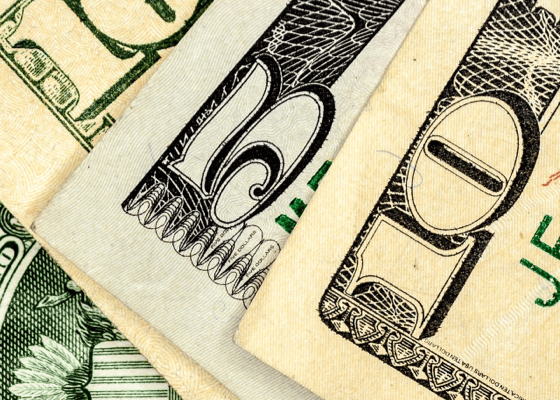How to Make a Fortune on Etsy…
…Even if You’re the Least Crafty Person on the Planet
It’s true! You can now sell on Etsy without creating anything yourself.
That’s because Etsy now lets you sell arts and crafts that are created by other people. You no longer have to create anything yourself because you can source your products from anyplace you like.
Etsy does stipulate that the product design or idea must originate with the seller or be vintage. But imagine if you have the ‘idea’ for a stuffed rabbit… you can get someone else to create that stuffed rabbit for you.
In fact, odds are someone has already created the thing you’re thinking of right now.
Plus, Etsy now lets you sell digital art that can be downloaded right from the Etsy website. This means you don’t need physical inventory, you don’t have to ship anything and you don’t have to build your own download pages, either.
I love anything I can sell digitally because the cost to sell it is low, there is no shipping, and you can sell a million copies with total hands-free automation.
Of course, you can sell a combination of digital and physical products for maximum sales profits, too.
Before we get started on product selection, I want to make sure you and I are on the same page. I know a lot of marketers think Etsy is for other people, and if that’s you, then please consider the following:
- Etsy is newbie friendly and offers plenty of online support and help for sellers and buyers.
- Unlike eBay, Etsy makes it easy for new sellers to profitably enter the marketplace. For example, eBay greatly restricts the number of listings you can have when you’re new to selling, while Etsy lets you list as many items as you like.
- Etsy has lots of highly targeted and relatively easy to access traffic
- Etsy’s demographic is different from eBay. Buyers are more interested in finding great items and less worried about getting a low price.
- Competition on Etsy is low, making it easy to get in front of customers right away.
- Etsy uses built in social factors to help sellers bring traffic to their listings. For example, Etsy allows sellers to acquire followers and customers to favorite items, both of which can boost visibility and sales.
- Rules favor new sellers almost as much as established sellers
- Your listings can attract organic traffic through Google search results
- It’s easy to promote your Etsy store through Facebook pages
- Shipping and pricing is flexible, allowing you to turn a single product sale into a multiple item listing to increase sales and boost profits
- Joining Etsy is free, as is setting up an Etsy store
- Listings cost just 20 cents each and the listing remains online for 4 months or until the item sells. Any items that are left after 4 months can be relisted for another 20 cents.
- Multiple quantities of the same item can all be listed for just 20 cents. Only when a sale is made for one of the additional items do you pay an additional 20 cents.
- Etsy only takes 5% of the selling price including shipping – not 10% or more like eBay does.
- Etsy offers buyers a wide range of payment options, takes care of the payment processing for you and deposits payments directly into your bank account.
- Etsy also gives customers an Etsy Payments option. For the seller this is a flat fee of 25 cents per item plus 3% of the total sale. Etsy internal stats show that Etsy Payments increase sales by 49% on average.
How Much Money Can You Make on Etsy?
That’s like asking how long a piece of string is.
Do a little bit of work in the right niche and you might earn a few hundred or a few thousand dollars.
Do more and you’ll make more.
There are people on Etsy earing six figures and some of them are doing it with part time effort.
Etsy is a great platform for most anyone, regardless of their experience (or lack of experience) marketing online.
Grandmothers, children, spouses and anyone looking for part time or full time income should check out Etsy.
Who Shops on Etsy?
Two-thirds of Etsy’s visitors are women.
Over two-thirds of them don’t have children.
A little more than half make more than $60,000 per year and are between 18 and 34 years old.
64% of visitors are from the U.S.
This means your products will do well if they are targeted to young, upper middle class women. Children’s items and men’s items don’t tend to do as well, but there are exceptions.
It’s predicted that the current trend of more men using Etsy is going to continue, so if you’re determined to cater to men, you might be on the cutting edge of a new trend.
When Etsy visitors are referred from another site, those sites are typically Google, Facebook and Pinterest. This means you can find your customers on Facebook and Pinterest, which we’ll cover later. And you can optimize your listings to appear in Google’s search results, too, which we’ll also cover.
Steps to Success on Etsy
Before you build something worthwhile you need to have a plan and starting an Etsy business is no exception.
Most Etsy sellers set up their Etsy store without a plan. Then when they’re wondering why they’re not making sales, they try to fix their store to make it work.
This is backwards because before you build anything you’ve got to have a solid foundation that tells you in advance your business will be a success.
Here are the steps to becoming successful on Etsy. And don’t worry… I know this sounds like a lot, but you can do the whole thing in a short amount of time if you’re ready to start making money.
Step 1: Find your profitable niche(s) using free online tools (Doesn’t it make sense to know in advance that you chose a niche that will make you sales?)
Step 2: Create or source your products (Hint: It’s possible to do this for super cheap or even for FREE – I’ll show you how)
Step 3: Create your store branding and theme (Why blend into the crowd when you can stand out, get noticed and get repeat sales?)
Step 4: Create a header banner to further your branding and inspire confidence in your visitors
Step 5: Add perceived value to your products with simple, yet elegant packaging (This also increases your odds of receiving positive, glowing reviews)
Step 6: Start building your Etsy shop with a bio and about page that inspires and gives your visitors a sense of confidence in you and your store
Step 7: Create your product photos (this might be actual photos or scans – no worries, it’s not hard)
Step 8: Write copy for your listings that makes your products irresistible
Step 9: Use keywords and tags so that Etsy buyers can find you (And helps Google to send you traffic)
Step 10: Create a Facebook Fan Page with an email opt-in and embed your Etsy shop into the Fan Page, too
Step 11: Promote your listings on certain websites to bring in even more buyers (I’ll reveal which sites work best)
Step 12: Promote both your listings and your Etsy store inside of Etsy itself (This is super easy to do, too)
Step 13: Interlink everything to make your entire Etsy business one powerful customer magnet that draws buyers in and gets them to spend their money in your shop.
Reading this list over I realize it can sound like a LOT to do if you’re brand new to Etsy, but I promise you that none of this is difficult or even all that time-consuming.
Once you’ve got your business set up according to these steps, then all you need to do is continue to add products, add more niches if you choose to, build your following and that’s about it!
Forget About Perfection
Perfection isn’t needed or even wanted when building your Etsy business. From my experience I can share with you that striving to make everything perfect is simply going to turn into an exercise in failure, since perfection isn’t attainable anyway.
I’ve seen more people fail in their online ventures because they were trying to be perfect than for almost any other reason. Perfection is a trap. Plan on doing as best you can with each step and then quickly moving on to the next step.
You’ll probably make a few minor mistakes.
And you might wish later you’d done something differently.
All of that is to be expected, not dreaded. In fact, having a less than perfect Etsy store is fantastic because taking action with even mediocre results beats the heck out of never getting anything done because you’re trying to make it exactly right.
It’s far more important that you do all of the steps outlined above as best you can in a short amount of time without trying to be perfect.
By doing each step you’ll have an Etsy store that has a theme, is branded and contains items that attract buyers.
And you can improve all you want along the way as you make more and more of those sales, too.
Step 1: Finding Your Profitable Niche(s)
You’ve got two options here:
The first is what most people do. They choose a niche they like and hope it makes them money.
The second option is to know for certain that a niche is already making lots of money before you ever jump into it. Obviously, I’m going to suggest you use this second method for your store.
If you don’t already have an Etsy account, go ahead and sign up for one now at Etsy.com.
Now find the search bar and enter a keyword Search phrase that interests you.
The site will show you current listings only – no past listings – but you don’t need those anyway.
On the results page, right click on several products that catch your eye and open each one in a new tab.
Take a look at the product itself and then click through to the seller’s shop by clicking the shop name.
Find the number of sales the shop has made, as well as how long the shop has been online. Use this to calculate the number of sales made per month.
Look at the shop sections on the left-hand side to see which sections have the most products. Many times you can also search through ‘sales’ to find out what this seller has sold.
Repeat this search process using more specific keyword searches, finding the high-selling vendors and discovering what is selling the best. Your goal is to drill down and locate the highly profitable sub-niches and even sub-sub-niches.
Notice that when you start to enter a search word or phrase into Etsy’s search bar, you’ll see suggested search terms in a drop down box. These suggestions generally represent some of the most popularly searched variations of keyword phrases on Etsy and can aid you greatly in your search for a hot niche.
If you look at the bottom of the keyword phrase suggestion list, you’ll see an option to find shop names containing your keyword phrase. This is a quick way to find other sellers in your niche.
While you are doing this, start a listings ‘swipe file’ where you copy and paste keywords, product descriptions, product titles and so forth. You won’t be using these as is because that’s plagiarism, but you can use them as a springboard to your own listings by rewriting them.
When you find a niche that looks promising, find the most successful sellers in that niche. You’re looking for sellers who make at least several sales per day and are selling the same items over and over again.
If you’re not sure what to start searching for, try something like digital prints, art prints, jewelry, photography, PDF coloring books, mugs or t-shirts. These are all good examples of products that can be created/designed once and sold over and over again.
To estimate how much a seller is making, take the average number of sales per month and multiply that times how much you think they are clearing (after fees) on the average item. For example, if they are making 300 sales per month, their items are delivered digitally, and prices range from $15 to $25, then we’ll conservatively say they are clearing $18 on each item after fees. Multiply that times 300 and you see they’re likely making about $5400 profit per month.
By studying what successful sellers are doing on Etsy, we can avoid unprofitable niches, find profitable ones and see how we might choose and market our own products for best effect.
My Favorite Product – Prints
I’m not looking to influence you here, but I do want to share with you my favorite category of Etsy product – prints.
These can be digital prints that are downloaded online, meaning you never have to ship a thing. Etsy totally automates the entire process of hosting the downloads and providing access to buyers, and there is virtually no cost for product creation and fulfillment. Plus, you can sell the same print literally thousands of time, too!
These can also be actual physical prints that you ship out. You can offer them matted or unmatted, framed or unframed. Physical prints have a higher perceived value than digital downloads so you can charge more. And if you choose you can use this higher profit margin to pay for a service such as Amazon’s FBA to ship your Etsy items for you, too.
Prints can be of your own artwork or of other artist’s artwork, photographs and so forth. Do you have any starving artists in your town? I’ll bet you do! Partnering with a few of them could be quite lucrative for you.
Then there are royalty free prints. You can source current images online that allow you to sell copies, and you can find vintage prints, pictures, postcards, posters and photos that are no longer copyrighted.
And prints don’t necessarily mean items that are hung on a wall, either. Think about the coloring book niche – it’s super hot right now and all you need are black and white images that can be printed and colored by customers.
You might also put artwork on mugs, t-shirts, mousepads, shopping bags and more, using one of the many printing services to fulfill your orders for you.
The options with prints are nearly limitless and there is always a demand, which is why prints are my favorite product of all.
Free Resources for High Profit Niche Research
While Etsy has thousands of hot hidden niches and subniches that are highly profitable, you won’t always find them by doing the research we referenced above.
That’s why I’m going to give you an additional option for doing your niche research, using a little website called eBay.
Here’s how it works:
Go to eBay’s homepage and using the categories on the left, navigate to the listings category for your niche.
Once you get there, scroll down to the bottom and select, ‘See all items in (Niche)’
Then on the left-hand side, select ‘sold listings only’ and ‘sorted by most recent’. If you like, choose a price range and a location such as U.S.
Look at the resulting images and right click (open in new tab) any listings that are in the niche you’re considering.
For each listing, check out the seller’s other listings to see which products sold well in the past.
Remember to add any pertinent info to your swipe file while you’re doing this, because you’ll thank yourself later.
If you’re looking at prints, notice which ones are in the public domain because these are free and easy to source.
Next, go to WatchCount.com in a separate window. Copy the eBay item # from any of the eBay listings that interest you and paste the item # into WatchCount’s keyword box. Click the ‘What’s Most Popular’ button. This will show you the listing dates, which tells you how long the item took to sell.
Your goal is to find tightly niched items that ideally appeal to women, sell on both eBay and Etsy and are commanding prices that will yield you a nice profit. If the product is digital, you should be able to sell it for at least $3, although of course $10 or $20 is much more preferred. Physical products should sell for a minimum of $7 plus shipping, unless you can source them for almost nothing.
Now that you have several profitable ideas of what to sell on Etsy, the next step is to find these items so that you can offer them in your Etsy store.
Coming In Our Next Etsy Installment:
We’re going to cover…
…how to create or source your own products for very little money or even no money at all.
…how to acquire popular digital prints and books for free
…how to create physical products that sell like hotcakes, take no artistic skill on your part, cost you very little and sell for substantial prices
…how to acquire rare and original vintage prints for pennies and sell them for $20 or more
…how to create or outsource celebrity artwork prints for very little cost and resell for massive profit
…how to find local crafts and vintage items you can buy cheaply and resell for 5 to 25 times as much as you paid.
Stay tuned!
Claim Your Free MP3 And PDF Training: The 3-Part Plan To Topping $100,000 Per Year In Profit
Enter your name and email address below to receive a new lesson delivered to your inbox once a week. Your first lesson will be delivered immediately.

Privacy Policy : We value your privacy. You can unsubscribe from receiving future emails with 1 click at any time.























